Disclaimer: I ordered this a year ago from amazon at full price and have used It since then, so it’s a 1 year in use review. (This is the 2020 version.)
Disclaimer 2: My opinion is that amps do make some very slight differences in the tonality but it is very minor and if you want to change the tonality of the transducer it is better to change the transducer itself or to change the tips/foams/pads (iem, earbud, headphones). While the DAC does NOT make any difference at all.
Price: 400 usd (although I paid 500 usd on amazon)
Specifications:
Screen – 5-inch 1080p Sharp LCD
Operating System - Android 8.1
CPU – Rockchip Octa Core | RAM - 2GB | ROM - 32GB
DAC - Dual CS43198
Output Ports – 4.4 mm BAL & 3.5mm (PO/LO/SPDIF)
Battery - 3200mAh
Charging - QC3.0, PD2.0
Wi-Fi - 80 2.11 b/g/n/ac (2.4Ghz/5Ghz)
Bluetooth - Bluetooth 5.0
Weight - 178g
- 4.4mm Balanced Out
Output Level - 6.4Vrms
Output Impedance – 0.4 Ω
Frequency Response - 10Hz-40kHz +/-0.15dB
S/N - 130dB
THD+N - 0.00022% (32Ω, 3Vrms)
- 3.5mm Headphone Out
Output Level - 3.2Vrms
Output Impedance – 0.3 Ω
Frequency Response - 10Hz-40kHz +/-0.15dB
S/N - 125dB
THD+N - 0.0007% (32Ω, 2Vrms)
- Line Out
Output Level - 3.2Vrms
Frequency Response - 10Hz-40kHz +/-0.15dB
S/N - 125dB
THD+N - 0.00035% (no Load)
Accessories:
2x Plastic screen protector
Soft silicone cover
USB-C cable
Build: The build is pretty small for a mid-tier dap so its not a problem for me to have it in a jeans front pocket together with my smartphone (LG G7). The chassis is made out of metal while the back cover is in glass and a glass display. Power button at the top while the USB-C port for charging and connecting it to a PC is also there. At the right side there are track control buttons (skip, go-back and pause/play) and a volume wheel as well. At the left side there is a slot for the micro-SD card (single slot). While at the bottom left there are the 4.4mm and the 3.5mm outputs.
Useability: Now, this is where the DX160 is really terrible at. The CPU it uses and the optimization is so horrible that occasionally, even just lowering/increasing the volume is not instant and is delayed. Which means that if you increased it and did not hear any difference and keep on doing it, a few seconds later all the changes you made will instantly happen. Which can cause quite the volume spike.
Pressing the power button takes around 1.0-1.5 seconds before it actually opens up the screen while turning off the screen takes around 0.5-1.0 seconds. This might not seem like a lot, but during use this makes the overall experience a very bad one.
The 3.5mm output is a lot worse than the 4.4mm and not just because it has a lot lower output power. But because there is noise in it, turning off/on the Wi-Fi makes a very obvious noise in the background for a second. But while having the Wi-Fi on, there is constant noise in the background, which is lessened while it is turned off. Another noise factor is that it seems to have some processor noise, basically when you are interacting with it (even by simply touching and moving the screen) it makes a noise similar to static noise coming from an old radio. (This is only noticeable on BA iems and is excluded to the 3.5mm output, the 4.4mm is completely silent with everything I have tried except the Tansio Mirai TSMR 4 pro that do have hiss)
The volume wheel is another issue. Due to how it is designed, it is very hard to adjust the volume using it while the DX160 is in a pocket. This essentially means that if you are outside and want to adjust the volume, you need to take the entire device out. Which is another point of inconvenience. While the other buttons feel very “mushy” and not very tactile at all, which make the user experience feel non-premium. The track control buttons are also non-responsive when you have had the DX160 turned off (screen) for a few minutes, which requires you to press the power button and go into it before it responds to you.
Battery life is also an issue as it runs out of juice very quickly. It generally goes from 100-70% in just around 2 hours which is the usual time I spend on a session. (I also recharge it to 100 after, so I am not sure how long it can run from 100-0, but it is a lot worse than my old dap, the Fiio M11.)
The display, while quite good for a dap, is too bright at even the lowest settings (another factor for bad battery life) which meant that I needed to install a 3rd party app to lower it more.
Bluetooth is something I never use so I can’t comment on that, but from other people´s posts it doesn’t seem to be very good either.
Setup: Neutron player, fast-roll-off
Synergy: As mentioned above, BA iems together with the 3.5mm is a no-go. But otherwise, the DX160 synergizes pretty well from iems, earbuds to headphones with the 4.4mm port since it is powerful enough to drive everything I own so far and the volume control is good enough that even extremely sensitive iems have good volume control. High-gain is only needed with the Tin Hifi P1 (the hardest to drive transducer I have) and that is also because I use PEQ with it. (Technically not really “needed” since even on low-gain I am nowhere close to max volume.)
Transducer:
Tin Hifi P1 (high-gain volume around 47, EQ, jvc Spiral dot++, cable A9 4.4mm): The hardest to drive transducer in my library and the DX160 can handle it without issues even with EQ that has a -14db preamp.
Audiosense T800 (low-gain, volume around 12, Elecom EHP-CAP20 tips + DIY Foam mod, cable A6 4.4mm): A very sensitive BA iem but there is no hiss and volume control is good enough to not be too loud or too little volume.
K´s Samsara K300 (low-gain, volume around 42, full foams, stock 4.4mm cable): A high impedance earbud at 300 ohm. But there are no issues here with a lack of power.
Koss KPH30i (low-gain, volume around 43, unmodded, stock 3.5mm cable): Lower impedance than the Samsara but needs a bit higher volume (most likely due to the lower sensitivity). But otherwise, the same response here, no problems with a lack of power.
Tonality: A warm-neutral tonality, is very versatile because of that and matches well with brighter transducers that would not match well with a bright amp since the end result could be too bright. Although for warmer transducers, the end result might end up being too warm.
Comparisons:
JDS Atom: The Atom has a similar output power (needs around the same volume, percentage wise when paired with the Tin Hifi P1 + EQ). But the DX160 is a better amp due to it working with everything from iems, earbuds to headphones. While the Atom struggles a lot with iems, especially sensitive ones due to the very poor volume control (either too little volume or way too much). The Atoms tonality is a bright-neutral one, so it’s the opposite of the DX160.
Schiit Asgard 3: The Asgard 3 has a lot more output power and the volume control is also better but since it is a volume wheel instead of showing the volume in terms of numbers in the DX160. It is similar in that regard. The Asgard 3 is neutral so it isn’t as warm as the DX160, which also means that it retains the transducers original tonality better without coloring it too much.
Conclusion: The Ibasso DX160 is a very powerful amp (4.4) that works on essentially everything while the 3.5mm is essentially non-functional due to the cpu/wifi noise. But aside from the sound, it is simply lacking too much and at the price it is at, it is extremely hard for me to recommend this. NOT RECOMMENDED UNLESS YOU ONLY CARE ABOUT THE SOUND! Thanks for reading.
Disclaimer 2: My opinion is that amps do make some very slight differences in the tonality but it is very minor and if you want to change the tonality of the transducer it is better to change the transducer itself or to change the tips/foams/pads (iem, earbud, headphones). While the DAC does NOT make any difference at all.
Price: 400 usd (although I paid 500 usd on amazon)
Specifications:
Screen – 5-inch 1080p Sharp LCD
Operating System - Android 8.1
CPU – Rockchip Octa Core | RAM - 2GB | ROM - 32GB
DAC - Dual CS43198
Output Ports – 4.4 mm BAL & 3.5mm (PO/LO/SPDIF)
Battery - 3200mAh
Charging - QC3.0, PD2.0
Wi-Fi - 80 2.11 b/g/n/ac (2.4Ghz/5Ghz)
Bluetooth - Bluetooth 5.0
Weight - 178g
- 4.4mm Balanced Out
Output Level - 6.4Vrms
Output Impedance – 0.4 Ω
Frequency Response - 10Hz-40kHz +/-0.15dB
S/N - 130dB
THD+N - 0.00022% (32Ω, 3Vrms)
- 3.5mm Headphone Out
Output Level - 3.2Vrms
Output Impedance – 0.3 Ω
Frequency Response - 10Hz-40kHz +/-0.15dB
S/N - 125dB
THD+N - 0.0007% (32Ω, 2Vrms)
- Line Out
Output Level - 3.2Vrms
Frequency Response - 10Hz-40kHz +/-0.15dB
S/N - 125dB
THD+N - 0.00035% (no Load)
Accessories:
2x Plastic screen protector
Soft silicone cover
USB-C cable
Build: The build is pretty small for a mid-tier dap so its not a problem for me to have it in a jeans front pocket together with my smartphone (LG G7). The chassis is made out of metal while the back cover is in glass and a glass display. Power button at the top while the USB-C port for charging and connecting it to a PC is also there. At the right side there are track control buttons (skip, go-back and pause/play) and a volume wheel as well. At the left side there is a slot for the micro-SD card (single slot). While at the bottom left there are the 4.4mm and the 3.5mm outputs.
Useability: Now, this is where the DX160 is really terrible at. The CPU it uses and the optimization is so horrible that occasionally, even just lowering/increasing the volume is not instant and is delayed. Which means that if you increased it and did not hear any difference and keep on doing it, a few seconds later all the changes you made will instantly happen. Which can cause quite the volume spike.
Pressing the power button takes around 1.0-1.5 seconds before it actually opens up the screen while turning off the screen takes around 0.5-1.0 seconds. This might not seem like a lot, but during use this makes the overall experience a very bad one.
The 3.5mm output is a lot worse than the 4.4mm and not just because it has a lot lower output power. But because there is noise in it, turning off/on the Wi-Fi makes a very obvious noise in the background for a second. But while having the Wi-Fi on, there is constant noise in the background, which is lessened while it is turned off. Another noise factor is that it seems to have some processor noise, basically when you are interacting with it (even by simply touching and moving the screen) it makes a noise similar to static noise coming from an old radio. (This is only noticeable on BA iems and is excluded to the 3.5mm output, the 4.4mm is completely silent with everything I have tried except the Tansio Mirai TSMR 4 pro that do have hiss)
The volume wheel is another issue. Due to how it is designed, it is very hard to adjust the volume using it while the DX160 is in a pocket. This essentially means that if you are outside and want to adjust the volume, you need to take the entire device out. Which is another point of inconvenience. While the other buttons feel very “mushy” and not very tactile at all, which make the user experience feel non-premium. The track control buttons are also non-responsive when you have had the DX160 turned off (screen) for a few minutes, which requires you to press the power button and go into it before it responds to you.
Battery life is also an issue as it runs out of juice very quickly. It generally goes from 100-70% in just around 2 hours which is the usual time I spend on a session. (I also recharge it to 100 after, so I am not sure how long it can run from 100-0, but it is a lot worse than my old dap, the Fiio M11.)
The display, while quite good for a dap, is too bright at even the lowest settings (another factor for bad battery life) which meant that I needed to install a 3rd party app to lower it more.
Bluetooth is something I never use so I can’t comment on that, but from other people´s posts it doesn’t seem to be very good either.
Setup: Neutron player, fast-roll-off
Synergy: As mentioned above, BA iems together with the 3.5mm is a no-go. But otherwise, the DX160 synergizes pretty well from iems, earbuds to headphones with the 4.4mm port since it is powerful enough to drive everything I own so far and the volume control is good enough that even extremely sensitive iems have good volume control. High-gain is only needed with the Tin Hifi P1 (the hardest to drive transducer I have) and that is also because I use PEQ with it. (Technically not really “needed” since even on low-gain I am nowhere close to max volume.)
Transducer:
Tin Hifi P1 (high-gain volume around 47, EQ, jvc Spiral dot++, cable A9 4.4mm): The hardest to drive transducer in my library and the DX160 can handle it without issues even with EQ that has a -14db preamp.
Audiosense T800 (low-gain, volume around 12, Elecom EHP-CAP20 tips + DIY Foam mod, cable A6 4.4mm): A very sensitive BA iem but there is no hiss and volume control is good enough to not be too loud or too little volume.
K´s Samsara K300 (low-gain, volume around 42, full foams, stock 4.4mm cable): A high impedance earbud at 300 ohm. But there are no issues here with a lack of power.
Koss KPH30i (low-gain, volume around 43, unmodded, stock 3.5mm cable): Lower impedance than the Samsara but needs a bit higher volume (most likely due to the lower sensitivity). But otherwise, the same response here, no problems with a lack of power.
Tonality: A warm-neutral tonality, is very versatile because of that and matches well with brighter transducers that would not match well with a bright amp since the end result could be too bright. Although for warmer transducers, the end result might end up being too warm.
Comparisons:
JDS Atom: The Atom has a similar output power (needs around the same volume, percentage wise when paired with the Tin Hifi P1 + EQ). But the DX160 is a better amp due to it working with everything from iems, earbuds to headphones. While the Atom struggles a lot with iems, especially sensitive ones due to the very poor volume control (either too little volume or way too much). The Atoms tonality is a bright-neutral one, so it’s the opposite of the DX160.
Schiit Asgard 3: The Asgard 3 has a lot more output power and the volume control is also better but since it is a volume wheel instead of showing the volume in terms of numbers in the DX160. It is similar in that regard. The Asgard 3 is neutral so it isn’t as warm as the DX160, which also means that it retains the transducers original tonality better without coloring it too much.
Conclusion: The Ibasso DX160 is a very powerful amp (4.4) that works on essentially everything while the 3.5mm is essentially non-functional due to the cpu/wifi noise. But aside from the sound, it is simply lacking too much and at the price it is at, it is extremely hard for me to recommend this. NOT RECOMMENDED UNLESS YOU ONLY CARE ABOUT THE SOUND! Thanks for reading.


 The tested player was red - the color can be described as very nice dark mauve. The tested, updated 2020 version of the DX160 contains an 5 inch, 445 ppi, 1080p screen produced by JDI. The screen fills the device side-to-side, just some small place is left below it. The screen looks gorgeous - colors and contrast are great, and has enough luminance to make the use also outdoors enjoyable.
The tested player was red - the color can be described as very nice dark mauve. The tested, updated 2020 version of the DX160 contains an 5 inch, 445 ppi, 1080p screen produced by JDI. The screen fills the device side-to-side, just some small place is left below it. The screen looks gorgeous - colors and contrast are great, and has enough luminance to make the use also outdoors enjoyable.




















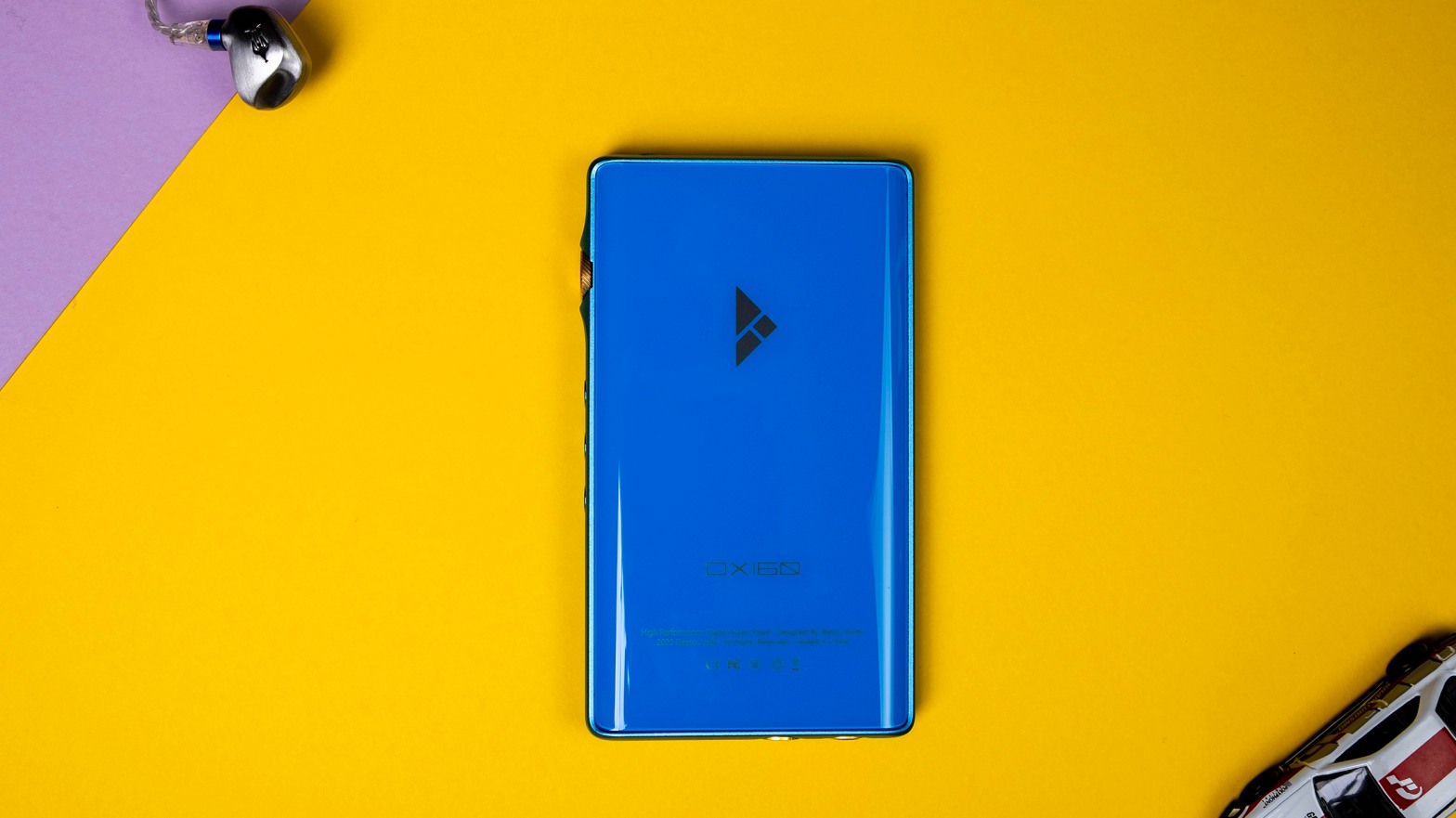






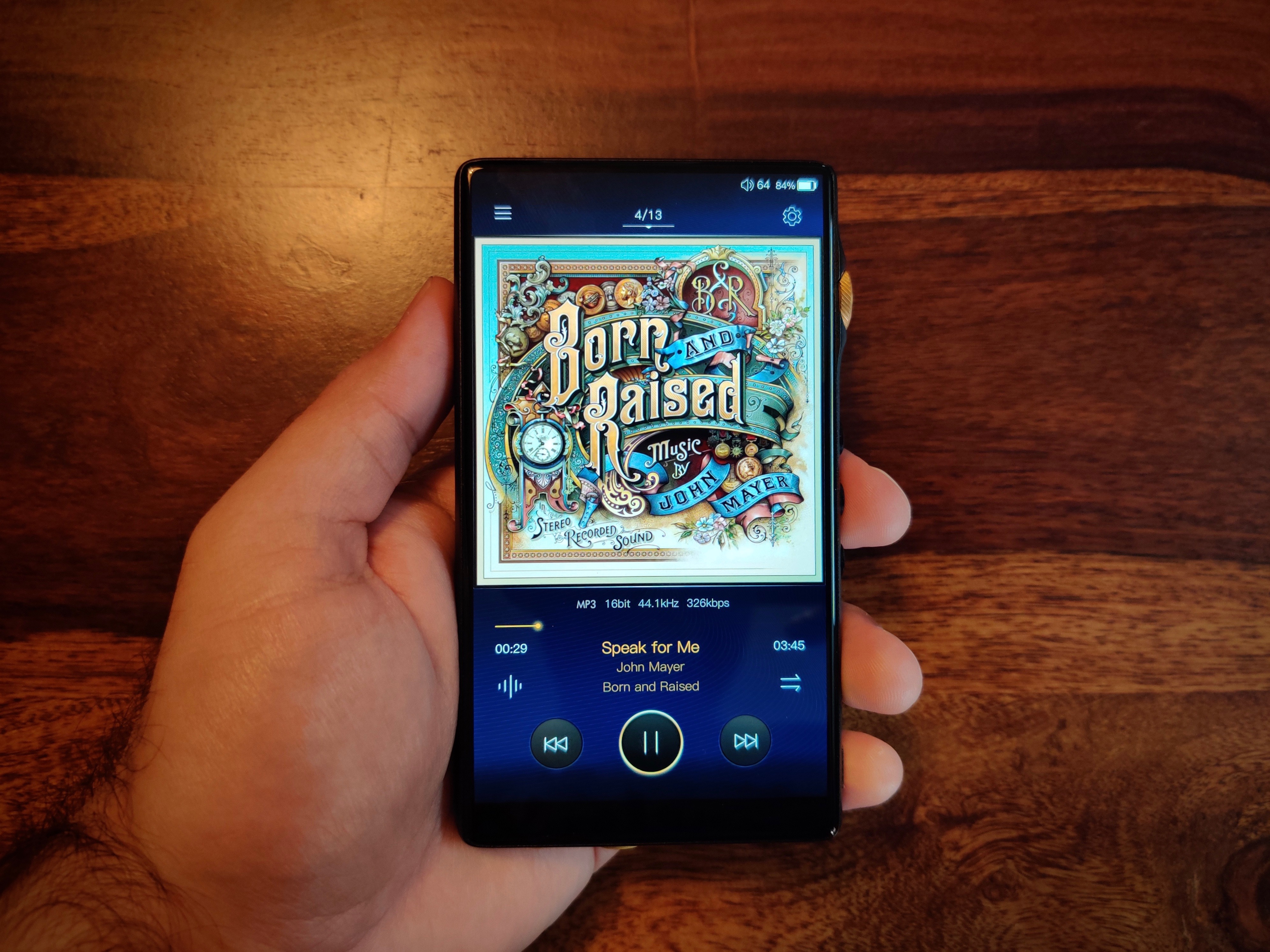









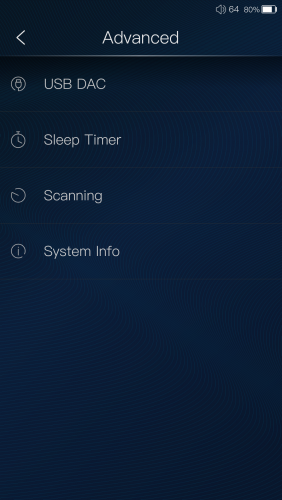











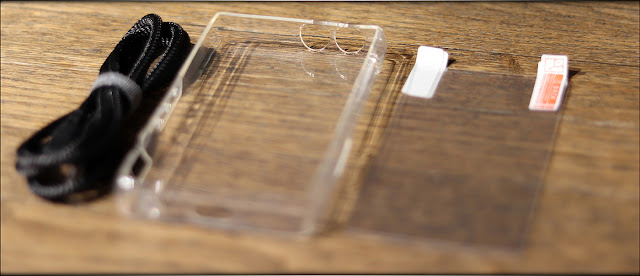


















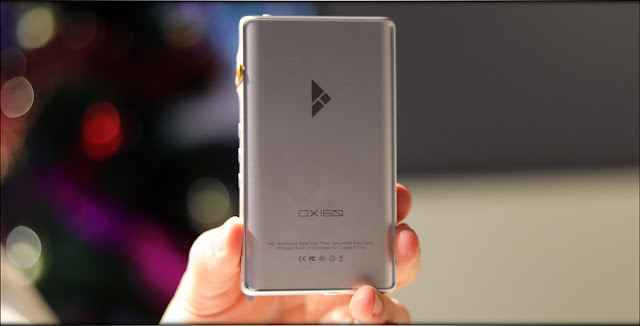
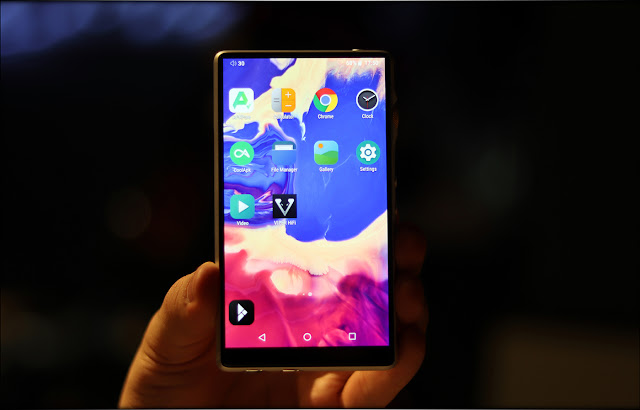
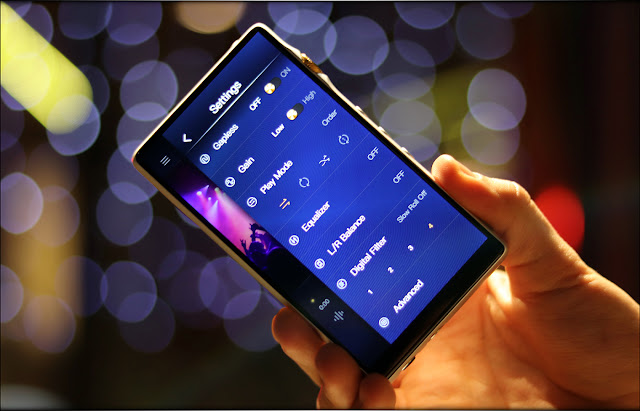

























































































































The only real issues I have compared to yours is the BT and WiFi signal, which are serviceable but weaker than, say a phone. But, then I have also not had the sheer amount of IEMs/headphones/earbuds plugged into mine that you have. Heck, if you still have warranty left on it, I might consider trying to get a different one IMO. I have read about people getting a replacement one due to the noise on their, as this is not exactly a common issue. Interesting!